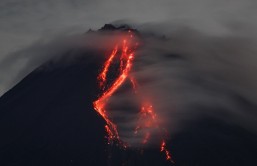A tiny island deer in Panama may have been hunted to extinction by humans thousands of years ago. Scientists took a closer look at a certain island and found that humans had a major impact on its ecology.
When the last polar ice caps melted at the end of the last Ice Age about 8,500 years ago, the global sea level rose and Panama's Pearl Islands were isolated from the mainland. Now, scientists have taken a closer look at the fossils that are present on the island to learn a bit more about the region's past.
"When I was washing the animal bones from the first test cut in 2008, out fell a deer ankle bone called a calcaneum," said Richard Cooke, an archaeologist at the Smithsonian Tropical Research Institute and co-author of the new study. "It was so tiny that I realized we had come across a population that had probably dwarfed through isolation."
The Pearl Archipelago, named for the rich pearl beds that were encountered by early Spanish explorers, lies about 16 miles off Panama's Pacific coast. On these islands, animals undergo a reduction in size compared to mainland relatives due to competition for limited food sources. In the case of the deer, this must have occurred between the time when the island was isolated from the mainland and the time when settlers arrived.
Adult deer living on Pero Gonzalez island about 6,000 years ago weighed less than 22 pounds, which is about as much as a beagle. Deer bones on the island actually represent a group of deer, which includes white-tailed deer and some gray brocket populations found in South America.
In this latest study, researchers uncovered 2,500 fragments of deer bones, corresponding to 22 individuals, in a 4-meter-deep trash heap that built up in a large hollow near the coast. Some of the deer bones had cuts that indicated butchering, such as disarticulation and slicing meat from the bone, or had the marks of human teeth. Others had been smashed to get at the marrow.
The number of deer bones decreased in the youngest layer of the midden, which indicates that the species became scarcer and the deer were likely hunted to extinction.
The findings reveal a bit more about the past ecology of this location. It also shows the effectiveness with which humans could hunt a species to extinction.








